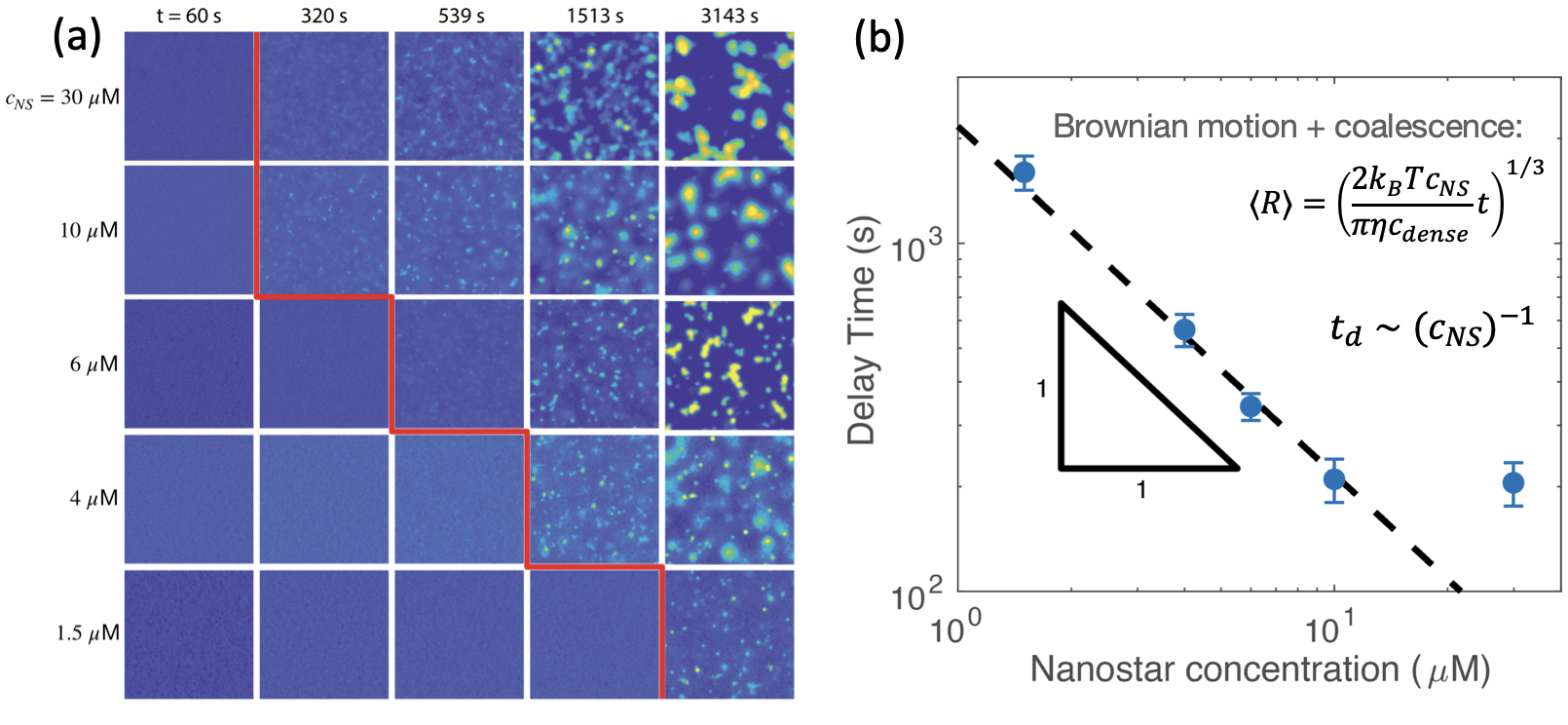A model phase-separating system of DNA nanostars provides unique access to nucleation physics in a biomolecular context. At low DNA concentrations, highly thermo-responsive DNA hybridization drives phase separation near room temperature.
By measuring the delay time before phase-separated droplets appear, UC Santa Barbara MRSEC researchers have demonstrated that DNA nanostar phase separation dynamics reflect that of a metastable mixture of patchy particles.
For deep quenches, droplets undergo spinodal decomposition and grow spontaneously through Brownian motion and coalescence, as confirmed by experimental measurements and particle simulations.
Near the coexistence boundary, droplet growth slows substantially and can be predicted by a classical nucleation picture.
These dynamical principles are relevant to behaviors associated with liquid–liquid phase separating systems, such as their spatial patterning, reaction coupling, and biological function.
